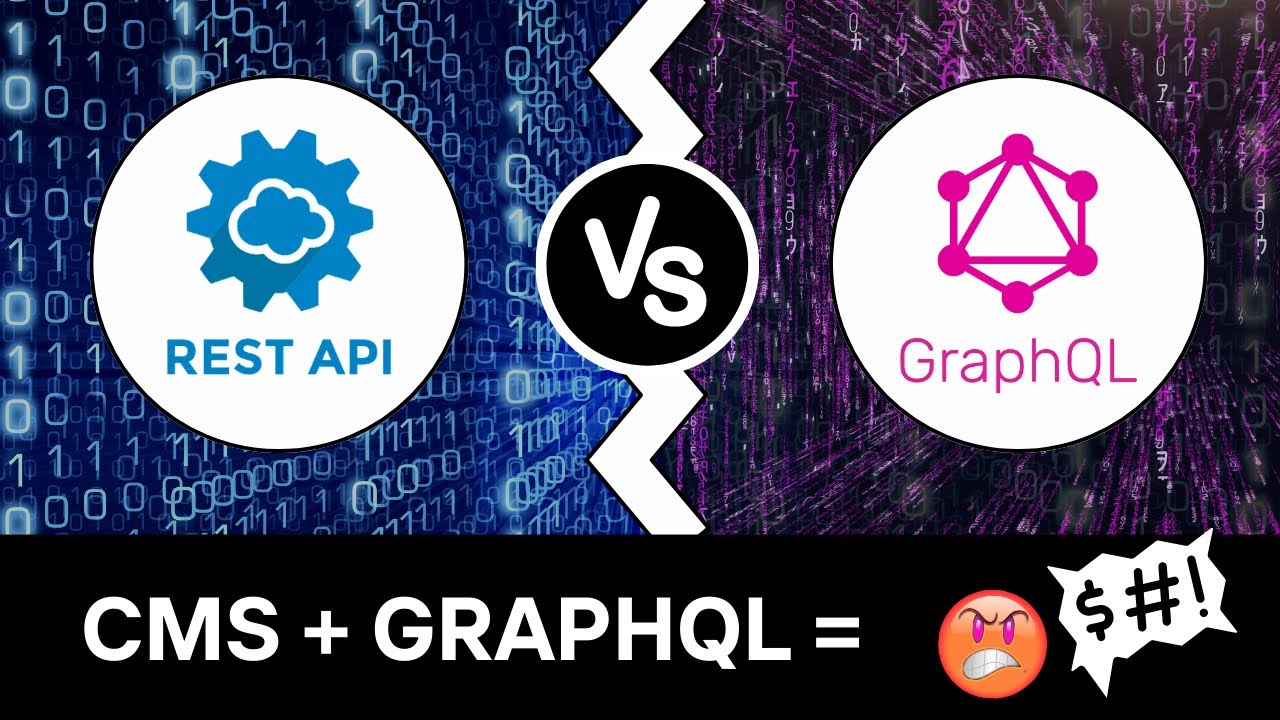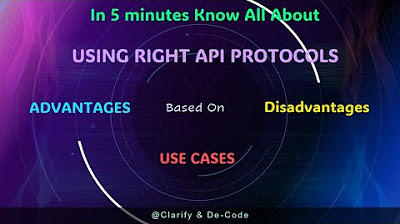Comparing web API types: SOAP, REST, GraphQL and RPC
Summary
TLDRThis video explores the four major types of web APIs: RPC, SOAP, REST, and GraphQL. It explains their evolution and key differences, highlighting the simplicity of RPC, the structured security of SOAP, the flexibility of REST, and the precision of GraphQL. REST has become the dominant choice for modern applications due to its scalability and resource-based communication, while GraphQL is favored for mobile applications due to its efficient data fetching. The video also touches on the growing importance of event-driven architecture, emphasizing its asynchronous nature for complex systems.
Takeaways
- 😀 RPC (Remote Procedure Call) is an early API style where clients call functions on remote servers, using stubs to convert and deconvert parameters.
- 😀 gRPC, a modern form of RPC developed by Google, is widely used in large systems like Facebook and Twitch for high-performance microservices communication.
- 😀 SOAP (Simple Object Access Protocol) uses XML to format messages but can be cumbersome and verbose, though it's still relevant in sectors like finance for its security features.
- 😀 SOAP includes built-in security (WS-Security) and is ideal for complex transactions that require chaining multiple requests, like booking a flight.
- 😀 REST (Representational State Transfer) focuses on resources and uses HTTP methods (GET, POST, PUT, DELETE) to interact with them, making it lightweight and flexible.
- 😀 REST APIs emphasize client-server autonomy, allowing clients and servers to evolve independently as long as the interface remains consistent.
- 😀 REST's constraints include stateless interactions, uniform interfaces, and caching, making it scalable and efficient, though it can be 'chatty' and require multiple requests for data.
- 😀 GraphQL optimizes data fetching by allowing clients to customize queries and fetch only the required data in a single request, reducing unnecessary calls.
- 😀 GraphQL introduces the concept of a schema, which defines how data is structured on the server, making it more efficient for large applications and mobile APIs.
- 😀 Event-driven architecture moves away from traditional request-response models, enabling asynchronous communication where clients and servers can act on notifications instead of constant polling.
- 😀 Choosing the right API depends on the application's needs: REST is popular for general purposes, GraphQL is great for mobile apps, SOAP is suited for secure, enterprise-level systems, and RPC excels in high-performance environments.
Q & A
What is an API and how do developers decide which specification to use?
-An API (Application Programming Interface) is a set of protocols that allows communication between different software systems. Developers typically choose an API specification based on the product's requirements, often opting for REST, but other approaches like SOAP, GraphQL, or RPC may be chosen depending on specific needs.
What is Remote Procedure Call (RPC) and how does it work?
-RPC is one of the earliest forms of API, where a client sends commands to a remote server. The client and server use different call parameters, which are converted by dedicated pieces of code called stubs. The client and server exchange messages, and the server executes the function based on the client’s request.
What is the main advantage of RPC in high-performance systems?
-RPC, especially when using protocols like gRPC, is ideal for high-performance systems like Facebook and Twitch due to its short, lightweight messages that minimize the load on the network, optimizing communication between internal microservices that handle millions of calls.
What is SOAP and why was it developed?
-SOAP (Simple Object Access Protocol) was developed as a more structured and secure way to exchange messages compared to XML-RPC. It uses a defined message structure with an envelope, header, and body, which is especially useful in industries like finance for secure and complex transactions.
How does SOAP handle security and message chaining?
-SOAP supports security through the WS-Security extension, which encrypts messages and ensures that only recipients with the correct security token can access the message. Additionally, SOAP can chain multiple messages, allowing for complex transactions that track previous requests.
What are the key constraints of REST architecture?
-REST has several key constraints: resource-based communication, client-server autonomy, uniform interface, stateless interactions, caching, and optional code on demand. These constraints ensure flexibility and simplicity in API design, though some may be violated in specific business cases.
What is the main difference between REST and SOAP in terms of data handling?
-REST focuses on resources and uses simple HTTP methods like GET, POST, PUT, and DELETE, whereas SOAP relies on a rigid XML structure and numerous methods to manipulate data. REST is more flexible and easier to use compared to SOAP’s verbosity and complexity.
What problem did GraphQL solve in comparison to REST APIs?
-GraphQL solved the problem of over-fetching and under-fetching data by allowing clients to make a single, precise query to the server. Unlike REST, which requires multiple endpoint calls to gather data, GraphQL enables a client to request exactly the data it needs in one go.
Why is GraphQL more suitable for mobile applications?
-GraphQL is more efficient for mobile applications because it reduces the amount of data transferred by allowing precise, custom queries. Mobile devices, with their limited bandwidth and storage, benefit from this optimization compared to traditional REST APIs, which can lead to excessive data usage.
What is event-driven architecture, and how does it differ from traditional request-response communication?
-Event-driven architecture allows clients and servers to communicate asynchronously, without directly depending on each other. Instead of a client waiting for a server’s response, it sends a notification and continues its operations. This architecture is more scalable and suited for complex, real-time systems where many events need to be processed simultaneously.
Outlines

Esta sección está disponible solo para usuarios con suscripción. Por favor, mejora tu plan para acceder a esta parte.
Mejorar ahoraMindmap

Esta sección está disponible solo para usuarios con suscripción. Por favor, mejora tu plan para acceder a esta parte.
Mejorar ahoraKeywords

Esta sección está disponible solo para usuarios con suscripción. Por favor, mejora tu plan para acceder a esta parte.
Mejorar ahoraHighlights

Esta sección está disponible solo para usuarios con suscripción. Por favor, mejora tu plan para acceder a esta parte.
Mejorar ahoraTranscripts

Esta sección está disponible solo para usuarios con suscripción. Por favor, mejora tu plan para acceder a esta parte.
Mejorar ahoraVer Más Videos Relacionados

[Frontend System Design] Client-Server API. Part 1 | REST

API Testing with POSTMAN In Hindi Part 1 (4+ LIVE Real Projects Download)

What Is REST API? Examples And How To Use It: Crash Course System Design #3

API Design in System Design Interviews w/ Meta Staff Engineer

Why GraphQL within CMS Projects can COST you thousands!

In 5 minutes Unlock the API powers REST gRPC GraphQL Websocket SOAP #api #restapi #graphql #soap
5.0 / 5 (0 votes)
